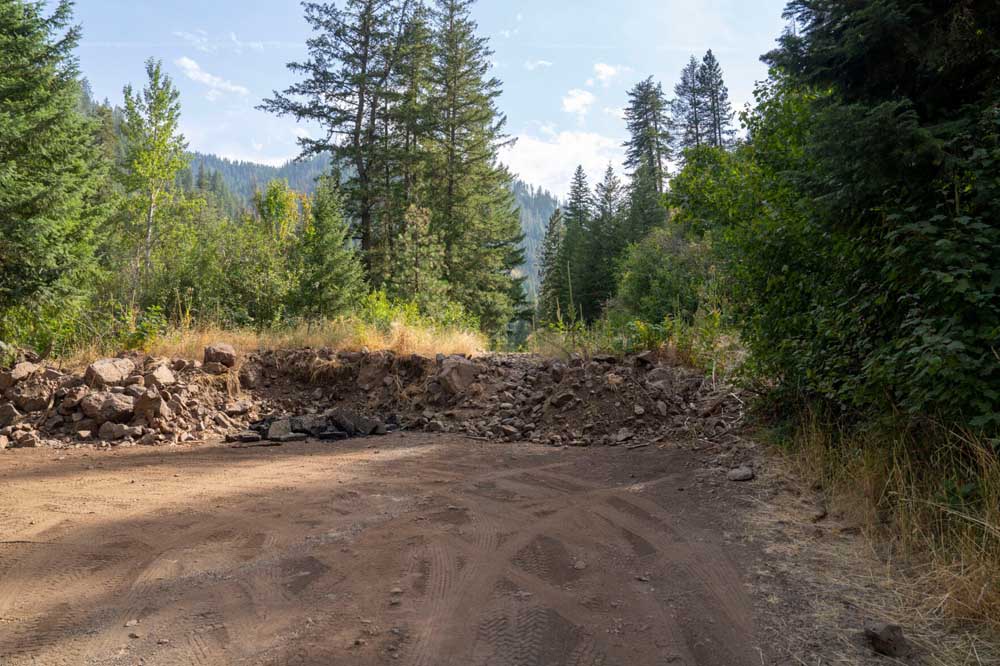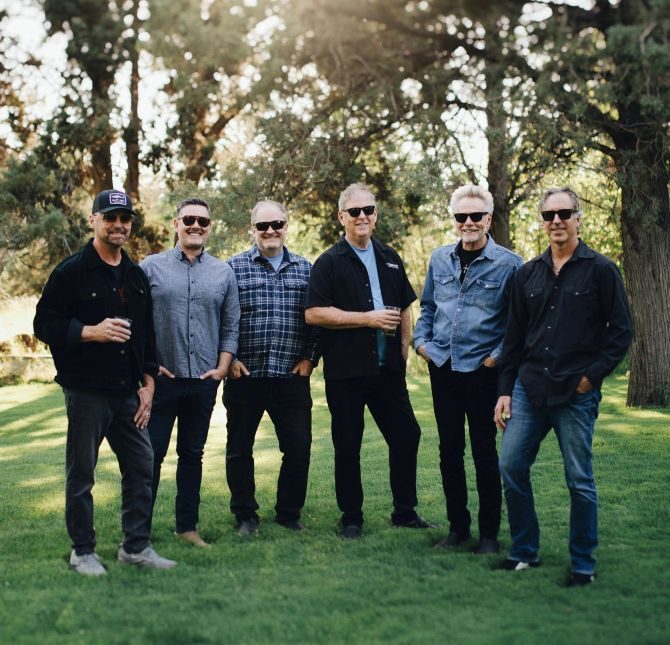Wildfire trap worries rural Umatilla County residents
Published 5:00 am Monday, September 2, 2024

- A landslide Aug. 22, 2024, blocks the dirt road on the west side of the Umatilla River near a recently repaired bridge that should serve as an emergency way out for residents of the Bingham Springs area.
UMATILLA COUNTY — As fire season burns across Eastern Oregon, residents living near the North Fork Umatilla Wilderness are feeling boxed in.
For people in the unincorporated community of Bingham Springs, at the bottom of a valley in the Blue Mountains just southwest of Tollgate, there’s only one way out — literally.
The February 2020 flood of the Umatilla River washed away much of the eastern side of the bridge crossing the North Fork of the Umatilla River, ensuring vehicles could not get across. As recently as July 6, the bridge was blocked off. The situation essentially created a box canyon for nearby residents because they can only drive one way to access their homes.
The U.S. Forest Service is responsible for the bridge, but resident Gail Hogge said the organization hadn’t touched it since the 2020 flood until early August of this year, when the bridge was finally repaired. However, the route still isn’t a viable exit because a landslide fully blocks the dirt road just a few hundred feet past the bridge.
Under normal circumstances, the bridge isn’t used as a main access point — it is on an unpaved Forest Service road winding through the Blue Mountains and exiting near either Tollgate, Elgin or La Grande, depending on the route.
“To me, it’s a natural look to watch and see that things are not looking well,” Hogge said. “And with the flood, that hadn’t happened in, I think they said a hundred years or something, and so we weren’t expecting it.”
Hogge said the unexpected flood made her consider the fire risk more seriously, especially with the downed bridge and dryness of the land. Though there hasn’t been a major fire there before, she may have more reason than normal to worry.
Since early July, a few smaller wildland fires have ignited in their region, but two, in particular, have started near Bingham Springs: the Buck Creek Fire and the Buck Mountain Fire. The Buck Creek Fire, which reached about 7 acres, was 100% contained as of July 12.
Comparatively, the Buck Mountain Fire, about 21 miles south of Walla Walla, Washington, reached about 3 acres but was initially difficult to access due to the terrain. According to the Umatilla National Forest on July 21, the fire had not grown since firefighters engaged on July 18, and it is under control.
The residents of Bingham Springs have not yet had to evacuate due to these fires or others nearby, but fire season continues. Hogge said she and her husband, Mark, almost evacuated a few times in mid-July because she felt like there often was not clear communication about the fires near their house.
“I haven’t really had too much fear of evacuating yet,” Mark said, “but our kids call us and are very concerned.”
Topographical challenges
In box canyons, such as the one the Hogges live in, fires tend to funnel weather and exacerbate fuel conditions and fire severity. This kind of landscape does not allow for good escape routes, said Matt Howard, Oregon Department of Forestry’s Northeast District forester. Wildfires in box canyons will come from both directions, he said, spreading into or out of the canyon and will change courses with wind and topography.
And, like with wildfires more broadly, it’s hard to predict when a box canyon wildfire will happen, both those due to weather and because of humans.
“We haven’t found a way to predict lightning,” Howard said. “And it’s difficult at best to predict human-caused fires.”
In Northeastern Oregon, a number of human-caused and lightning-caused fires started since early July, including two megafires near Baker City and John Day.
Wildland fires need oxygen and fuel to burn. Even vegetation that’s green can and will burn, Howard said.
“Those green plants still can be pretty volatile and burn readily,” he said, “especially if they have any dead material near the base that’ll contribute to the heat.”
As a wildfire burns through the fuel, it can change speed based on the fuel type, terrain, wind speed and direction. Howard said it’s “pretty easy” for wildfires to move faster than a person can run.
Be fire wise
There are precautions that residents in fire-prone areas can take, such as following fire-wise practices. These include preparation inside and outside the home, including the use of specific building materials, the location of firewood outside the home, maintaining a defensible space of at 30-100 feet around a home. Additionally, fire-wise communities are required to host meetings and workdays each year.
“These are communities that understand the risks of living in a fire prone ecosystem, and they’re actively doing things about it proactively,” Howard said. “My hope is folks really educate themselves. And we’re here to help, to give them as much information as they need, and we’re out in the community all the time, talking with these folks.”
Community culture can be a barrier to fire-wise behavior, though. Howard said people tend to only change their behavior and embrace the concept once they believe it’s beneficial to them, but part of his role, and ODF’s, is to support, encourage, work alongside and educate them.
“The more we can help them understand their risks and the measures in which they can be most successful in mitigating those risks, how they can live with wildfire,” he said, “how they can live in these beautiful places and protect themselves and their property, that’s the key right there.”








